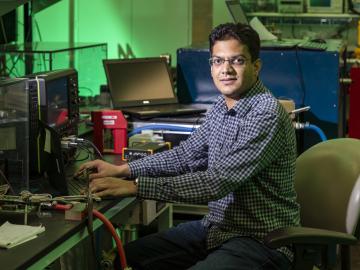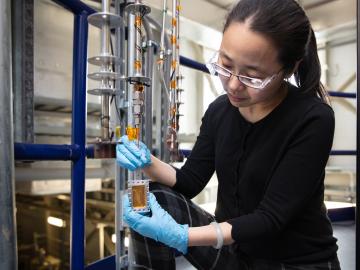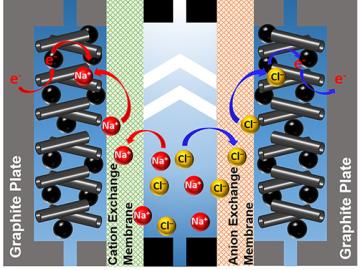
Filter News
Area of Research
- (-) Energy Science (149)
- (-) National Security (38)
- (-) Neutron Science (48)
- Advanced Manufacturing (7)
- Biological Systems (1)
- Biology and Environment (102)
- Computational Biology (2)
- Computational Engineering (3)
- Computer Science (10)
- Electricity and Smart Grid (3)
- Functional Materials for Energy (1)
- Fusion and Fission (9)
- Fusion Energy (2)
- Isotope Development and Production (1)
- Isotopes (8)
- Materials (107)
- Materials Characterization (1)
- Materials for Computing (19)
- Materials Under Extremes (1)
- Mathematics (1)
- Nuclear Science and Technology (6)
- Quantum information Science (2)
- Sensors and Controls (1)
- Supercomputing (79)
- Transportation Systems (2)
News Topics
- (-) Artificial Intelligence (25)
- (-) Biology (20)
- (-) Biomedical (21)
- (-) Clean Water (10)
- (-) Cybersecurity (25)
- (-) Grid (43)
- (-) Materials Science (49)
- (-) Mercury (3)
- (-) Transportation (70)
- 3-D Printing/Advanced Manufacturing (85)
- Advanced Reactors (7)
- Big Data (13)
- Bioenergy (33)
- Biotechnology (6)
- Buildings (38)
- Chemical Sciences (17)
- Composites (18)
- Computer Science (50)
- Coronavirus (24)
- Critical Materials (9)
- Energy Storage (74)
- Environment (64)
- Exascale Computing (2)
- Fossil Energy (3)
- Frontier (3)
- Fusion (3)
- High-Performance Computing (12)
- Hydropower (3)
- Isotopes (1)
- Machine Learning (21)
- Materials (47)
- Mathematics (3)
- Microelectronics (1)
- Microscopy (10)
- Molten Salt (1)
- Nanotechnology (18)
- National Security (37)
- Neutron Science (121)
- Nuclear Energy (13)
- Partnerships (16)
- Physics (11)
- Polymers (12)
- Quantum Computing (1)
- Quantum Science (9)
- Security (16)
- Simulation (4)
- Space Exploration (6)
- Statistics (1)
- Summit (10)
Media Contacts

A team of researchers at Oak Ridge National Laboratory have demonstrated that designed synthetic polymers can serve as a high-performance binding material for next-generation lithium-ion batteries.

Sometimes solutions to the biggest problems can be found in the smallest details. The work of biochemist Alex Johs at Oak Ridge National Laboratory bears this out, as he focuses on understanding protein structures and molecular interactions to resolve complex global problems like the spread of mercury pollution in waterways and the food supply.

Scientists have discovered a way to alter heat transport in thermoelectric materials, a finding that may ultimately improve energy efficiency as the materials

Galigekere is principal investigator for the breakthrough work in fast, wireless charging of electric vehicles being performed at the National Transportation Research Center at Oak Ridge National Laboratory.

Researchers at the Department of Energy’s Oak Ridge National Laboratory, Pacific Northwest National Laboratory and Washington State University teamed up to investigate the complex dynamics of low-water liquids that challenge nuclear waste processing at federal cleanup sites.

Scientists at Oak Ridge National Laboratory have developed a low-cost, printed, flexible sensor that can wrap around power cables to precisely monitor electrical loads from household appliances to support grid operations.

A team of scientists led by Oak Ridge National Laboratory used carbon nanotubes to improve a desalination process that attracts and removes ionic compounds such as salt from water using charged electrodes.

OAK RIDGE, Tenn., March 20, 2019—Direct observations of the structure and catalytic mechanism of a prototypical kinase enzyme—protein kinase A or PKA—will provide researchers and drug developers with significantly enhanced abilities to understand and treat fatal diseases and neurological disorders such as cancer, diabetes, and cystic fibrosis.


Oak Ridge National Laboratory’s latest Transportation Energy Data Book: Edition 37 reports that the number of vehicles nationwide is growing faster than the population, with sales more than 17 million since 2015, and the average household vehicle travels more than 11,000 miles per year.


